
Are these stamps for sale? The answer is, for the moment, no.
The question refers to the DigiClerk Stamp Collection and recent posts on the Facebook site DigiClerk Stamps | Facebook.
They have been scanned, digitised and uploaded to demonstrate how DigiClerk allows stamp collectors to display their collection. Displayed to a selected global audience. The community of stamp collectors.
We intend to develop a number of further features of DigiClerk and one of those will be the ability to trade stamps using an electronic wallet. Members will then be able to indicate that their stamps are for sale. Another feature will involve the use of AI to identify stamps and confirm which set they belong to.
However, we do not want to get ahead of ourselves and invent something that satisfies only us. We need the DigiClerk Stamp Collection to satisfy you and therefore, we seek Founder Members, to fund and steer the development of the DigiClerk Stamp Collection with a once in a lifetime payment.
Can I store family records on DigiClerk?
people
Yes, you can store family records on DigiClerk. That’s one of the many reasons we have created DigiClerk and the People Collection platform.
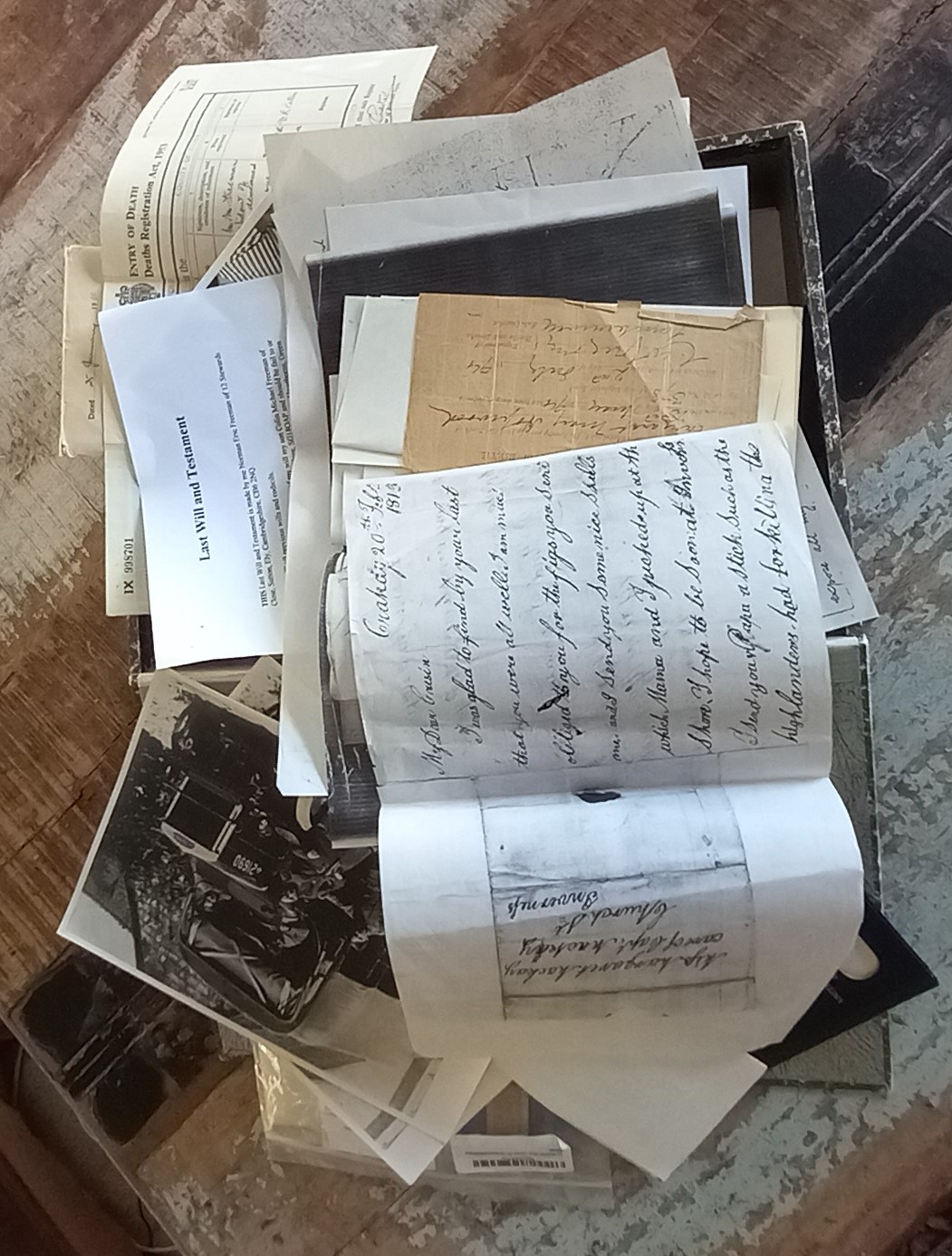
archive in your attic. family records
You can upload your family records for others to see them either in public or a private group.
Better than that you can earn credit to your electronic wallet from those family records on DigiClerk and in public view.
You can also share your records within a private group. There is an extra cost involved in keeping the records private to a group. This could wrk well for a school alumini, military We have a live example that you can follow on the news page.
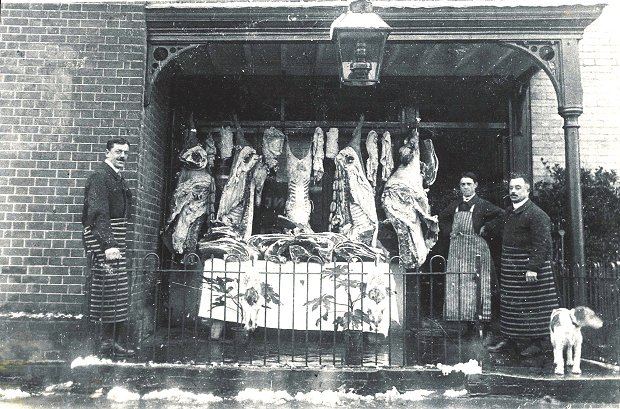
prentice house
The answer to “can we share records privately” is yes, but not yet. This is because we haven’t enabled the private collection function yet. At the moment all records on DigiClerk (DC) are available to Founder Members and Members depending on which Collection(s) they access to.
Very early on we realised that there would be the need to allow Members to share records privately. This could be a school alumni group, a family group, a military reunion group or a commercial organisation using DC for its archives. DC envisages three levels of privacy and sees them as growing from the bottom up, as they become more public.
The Membership costs will be higher for Blurred and Opaque collections because the revenue share model of DC cannot work with private records.
.

data protection
What is your data policy? First take a look at this short video to hear, first hand, our intentions.
The key points are:
- We do not share the data that you give us with any third party, except
- Your payment details only go to the third party payment party, we do not hold that data
- We only hold what you tell us
- We will use that data and information from the platform cookies to enhance your user experience
Our formative data policy is here.
Can DigiClerk help a museum?
Yes. Museums want to attract visitors and increase footfall and a measure of success for the majority of museums is normally their volume of visitors. DigiClerk can help a museum broaden its audience, funnel interest in the exhibits and increase footfall.
The issue

museum record (1)
Not all museums create and manage their own online information. Even those that do have a website do not necessarily have the platform for uploading their records and displaying them on an online platform. Another issue is not being able to display all their records in the physical exhibition space. The problem might also be that they have too many records.
The photograph (museum record (1) is an example from a local museum of a physical record on display. There are two such records on display in an historical location that must have had thousands of similar records. You would only know that there was a record concerning George Brunning if you visited that museum.
Long story, short
Using the DigiClerk platform the museum can upload and explore their own records. Once uploaded, the public can see that there is a record and the location of the record. They must subscribe to DigiClerk to open and view the record. This means that the number of records and their type and people involved is available to the general public and therefore increases the audience and hopefully, footfall.

Long story
The record was photographed using the DigiClerk smart phone app and automatically uploaded onto the platform. On the platform the details of the record were extracted and the relevant information input.
The platform also allows the inputter to input an accession code telling users where the physical record is stored. A key function for any archivist.
Immediately a geolocation is recorded for the record and shown on the DigiClerk map on the platform. There are thousands of dropped pins on the DigiClerk map. When the surname ‘Brunning’ is searched, the related record(s) is shown (see museum record (2). This search functionality is open to the general public and alerts anyone looking for the surname Brunning that there is a record or event at this location. Use the live map here and test it out.
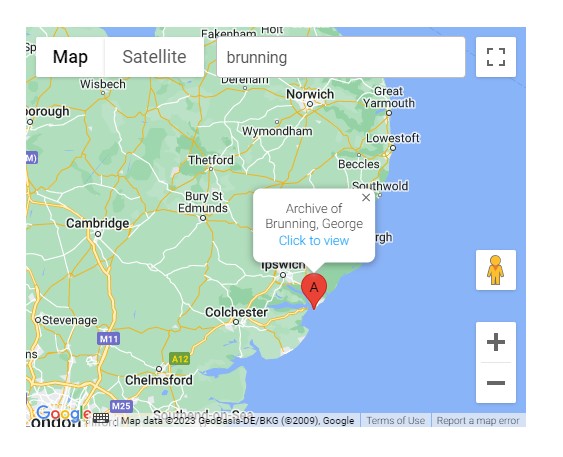
museum record (3)
On zooming in and clicking on that dropped pin (see museum record (3)) DigiClerk shows anyone viewing that there is an ‘Archive’ record, the name of the person and where it is located. Up until this point anyone on the internet can get to this stage. This information is available to the general public.
To be able to ‘Click to view’ the record you must be a subscriber to DigiClerk and the record is then available to view and explore (see museum record (4)). The record holds an image of the record but holds much more information related to that record. The user can then explore and see which other events or other people are related to this person. The exploration begins.
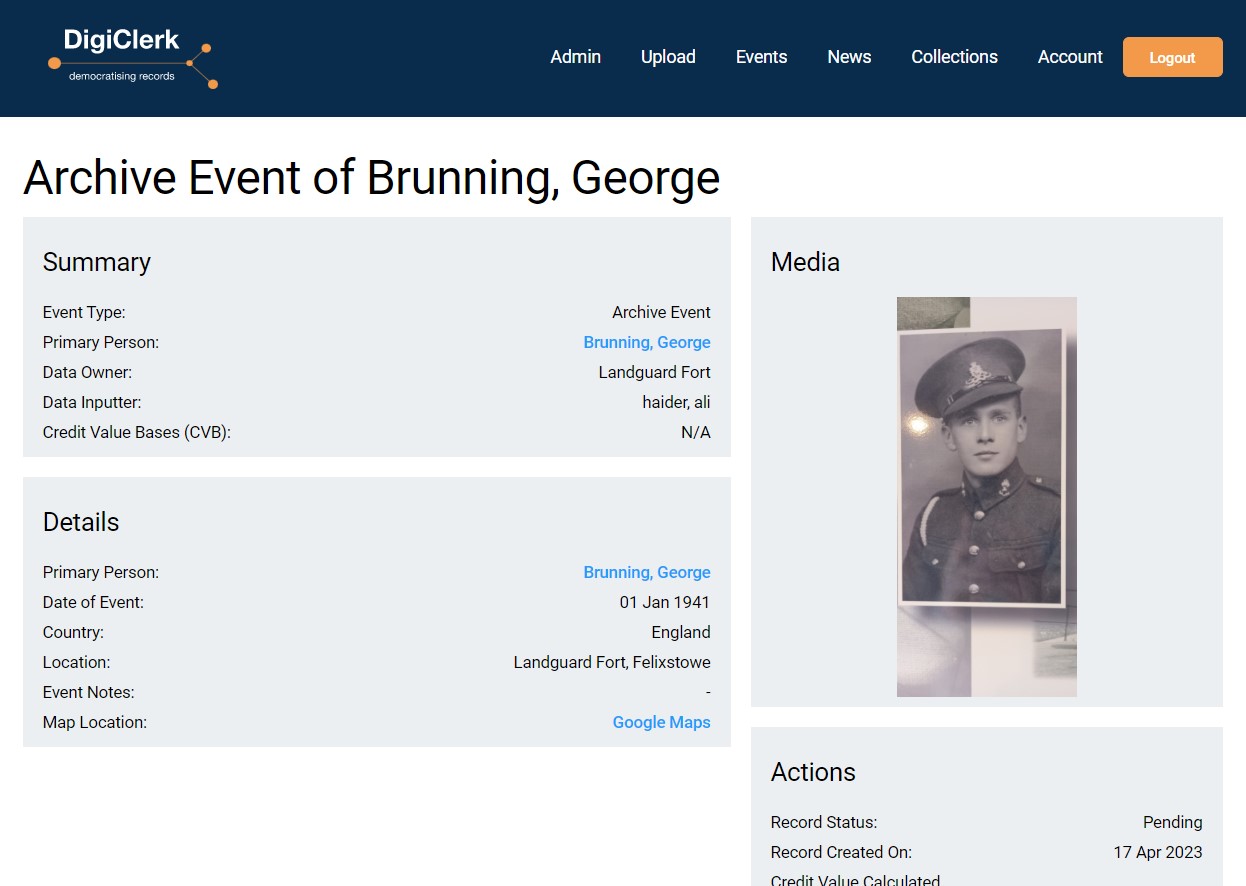
museum record (4)
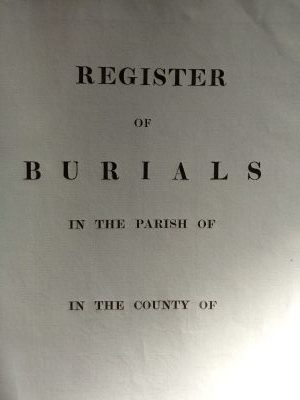
church burial register
DigiClerk can help your church.
- Who gets to see the records held in your church? The likely answer is not many.
- How does anyone know what records are in your church and what names are amongst them? The likely answer is one person. The Rector.
- Is there an online map of the graves in the churchyard? The likely answer is no.
DigiClerk (DC) can help your church.
As a church do you know the true value of the records that you have stored in the church and those sent to county archives? In terms of diversity, who gets to see those records? Using the DC platform the church can digitise your records (leaving the physical records where they are) and make them available online to a global audience.
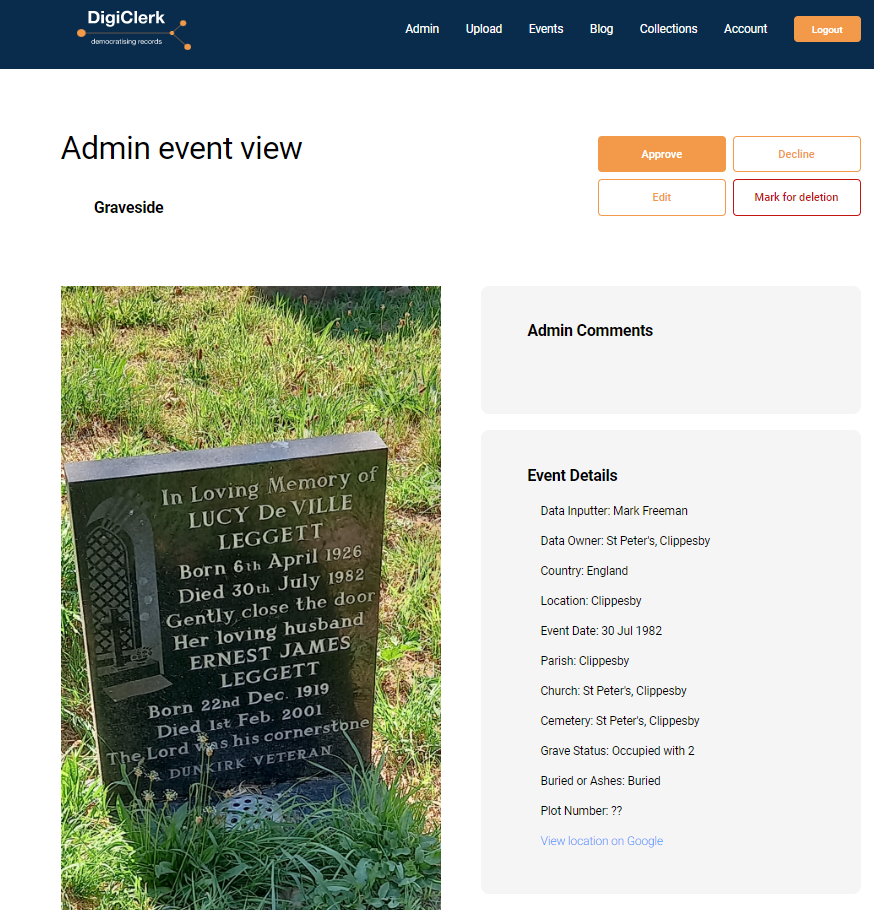
churchyard gravestone
Better than that, once DigiClerk has the right volume of subscribers, the church will earn income from those records.
Want to know more? Please contact mark@digiclerk.uk
We are seeking Founder Members to help accelerate the development of the platform. See this one time fee offer and be part of the record revolution.

church burial register
DigiClerk can help your church.
- Who gets to see the records held in your church? The likely answer is not many.
- How does anyone know what records are in your church and what names are amongst them? The likely answer is one person. The Rector.
- Is there an online map of the graves in the churchyard? The likely answer is no.
DigiClerk (DC) can help your church.
As a church do you know the true value of the records that you have stored in the church and those sent to county archives? In terms of diversity, who gets to see those records? Using the DC platform the church can digitise your records (leaving the physical records where they are) and make them available online to a global audience.

churchyard gravestone
Better than that, once DigiClerk has the right volume of subscribers, the church will earn income from those records.
Want to know more? Please contact mark@digiclerk.uk
We are seeking Founder Members to help accelerate the development of the platform. See this one time fee offer and be part of the record revolution.

How do I upload stamps?
Here is a summary of how to upload stamps. We are in the process of producing how to guides for Members.
Before you read this answer, you might want to watch this short video about uploading stamps.
There are two routes for the process:
- App – You can capture an image of the stamp using either the DigiClerk (DC) app on your phone, or
- CamScan – via a digital camera or scanner.
 App – The DC phone app captures the image and uploads the image directly onto DC and readies it for you to input all the relevant information about the stamp.
App – The DC phone app captures the image and uploads the image directly onto DC and readies it for you to input all the relevant information about the stamp.
CamScan – Using a camera or scanner creates one extra step in the process because the digitised image is uploaded onto your files storage system on your pc and then you pick the image from there.
In our experience the CamScan process produces the best quality image. However, this depends on the quality of the phone’s camera and the steadiness of your hand!
This slide is taken directly from the ‘how to’ guide for the Stamp Collection, currently being written. DC is producing a number of ‘how to’ guides to assist Members and here is a link to the how to upload stamps video.
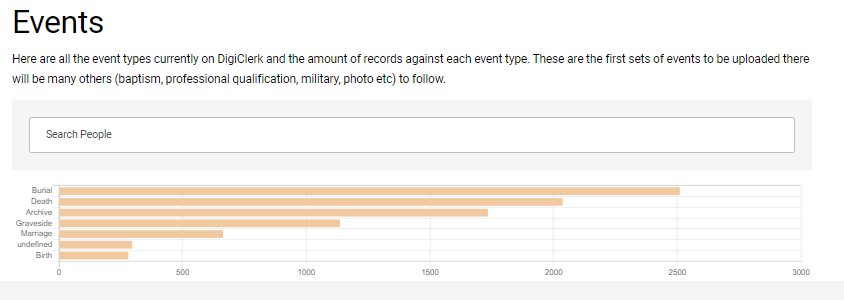
events graph
How does the events graph work in the People Collection?
Perhaps best answered by this short video

How many records are on DigiClerk (DC) now? The solution is to log look at each collection on the website which show the live numbers:
The numbers on the slide to the left will be slightly less than the real number of records because this is taken from the investor deck…these are the number of records on all three collections as at 5 Jan 2023.
More than enough to demonstrate and further develop the functionality of DigiClerk. These record sets are constantly
costs
Kickstarter offer
The the ‘kickstarter’ offer is: £80 for Founder Member +; and £50 for Founder Member. These fees include VAT and are once only payments that get you lifetime membership of DigiClerk. Also, they help us fund the next round of development.
Subscription membership fees
Our subscription member ship fees are:
Member + will be £80 a year, payable annually as £80 or monthly at £8.
Member will be £50 a year, payable annually as £50 or monthly at £5.
These fees include VAT. Nothing else to pay.
The only additonal fees However, we have not made these subscription fees live on the platform yet because we are looking for Founder members at this early stage. In order to raise kickstart funding and find early adopters, DigiClerk has created ‘Founder Member +‘ and ‘Founder Member‘ offers. This is a one off payment which gives you membership of DigiClerk for life and the ability to help mould the platform. The offer is:
- £80 for Founder Member +
- £50 for Founder Member
See the join us page. and watch this short video.
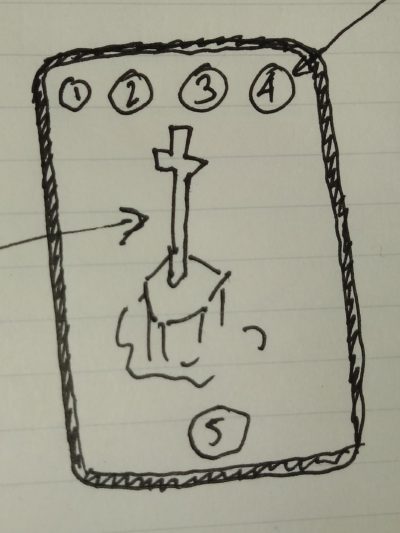
war memorial
How do I capture and upload a war memorial record?
At the moment the DigiClerk (DC) People Collection has bespoke input pages for:
- births
- marriages
- deaths
- burials
- gravesides and
- archive
‘Archives’ is a bit of a catch all category and is the one most suited for war memorials because it has a geolocation and the ability to add as many people as you want. Most war memorials have a list of names and the years of the war in which they fell.
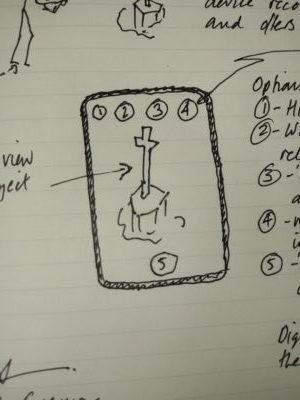
original sketch behind the idea for DigiClerk
Is a Founder Member a shareholder of DigiClerk? No.
Founder Members are not shareholders but they are those early adopters who see the benefit of a once for life ‘kickstart’ payment (£80 or £50) to help DigiClerk grow and develop more rapidly. Founder Members do not own a part of DigiClerk but will enjoy the ability to influence the development roadmap for the business and a lifetime’s membership for one payment only.
We think we have created a unique online platform for uploading records, sharing and exploring them.
A DigiClerk Collection is a group of records based around a certain thing or item. The current collections are based on people, stamps and yachting but there will be more coming. We are already being asked about Coins and Postcards. Also DigiClerk Members can create a collection of their own.
The People Collection has a person as the centre of every record in the collection. Currently the life events captured are birth, marriage, death, burial and graveside. We also have ‘archive’ as a bit of a catch all event, for the moment.
The Stamp Collection is based around postage stamps allowing stamp collectors to digitise, upload and share their collections with a global audience. Physical stamp collections rarely get seen by anyone other than the owner. Click here for a video showing you what you can explore right now.
The Yachting Collection is based on all things related to leisure maritime but starting with a focus on sailing and powerboats because that was what started the collection.
Please click on the links to see what the collections can do for you.
Join today and become part of the records revolution!

digiclerk legal and tax status
What is DigiClerk’s legal and tax status?
DigiClerk‘s legal and tax status is as a Suffolk, UK based, registered, privately owned company, subject to UK corporation tax.
We are a start-up SaaS platform at the pre revenue MVP stage.
See Companies House for more detail.
‘Member +’ and ‘Member’, what is the difference between memberships?
Member + has access to all Collections on DigiClerk whereas Member has access to one Collection only.
new functionality for the stamp collection
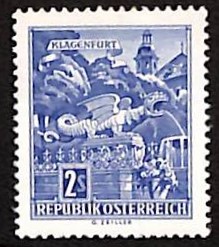 New functionality for the Stamp Collection?
New functionality for the Stamp Collection?
stamps
People are already requesting new functionality for the stamp collection so we thought we should outline what further functionality is already planned.
DigiClerk (DC) currently has the ability to load one image for every one stamp on a record. So, right now, you can capture:
- an image of a jumble of stamps on the table
- a page of stamps from an album or stock book
- a stamp set
- a stamp sheet
- a stamp
However, we need to be able to upload two images because, sometimes, you need to be able to see the back of a stamp or the back of a first day cover. The ability to capture two images for one record is in the pipeline.
Our fields allow you to identify the following: data owner, data source; country of stamp; location associated in the stamp; currency of stamp; subject matter, date of stamp, there are extra people related fields if it is a first day cover. There are fields to state if the stamp is for sale or not and fields to record where the stamp is stored. What’s planned for more fields? DC will create a field to capture the state of the stamp (mint, used etc) but need Founder Members to help us define their requirements.
DC will implement AI to help Members sort their digitised stamps into digital sets and identify which other members have similar sets and collections…and so much more. We see API allowing DC to scrape information from the internet to help Members. Information related to the valuation of stamps and the locations of stamps that Members are seeking.
Come and join the records revolution!
What is the DigiClerk Stamp Collection?
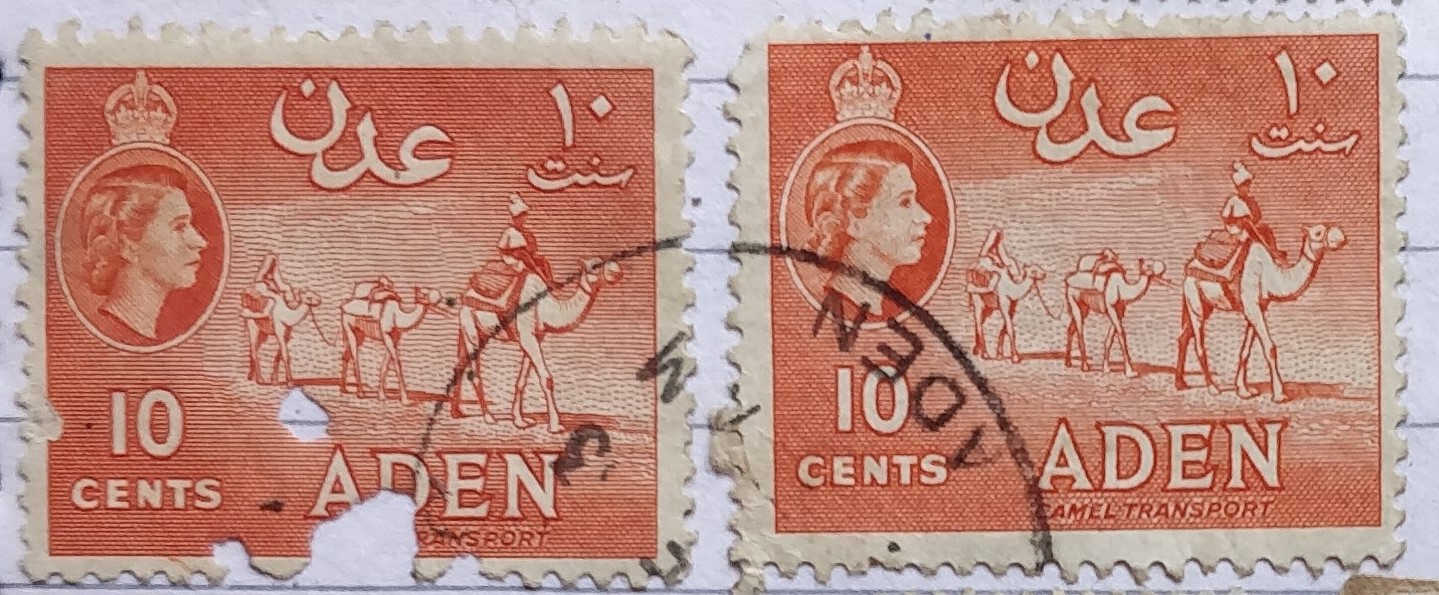
stamp collection
DigiClerk Stamp Collection is the world’s first online global stamp club. The collection allows Members to share their collections, online, around the world. This frees philately from physical collections and meetings.
Problem
Who gets to see your collection? The answer is probably, only you!
Solution
Upload and explore with The DigiClerk Stamp Collection (DCSC). Give your stamps a much wider audience and share your collection of stamps online with other Members around the world.
With DCSC, you can:
- capture and digitise an image of your stamp(s), using:
- the DCSC app on your smart phone, or
- a digital camera, or
- a scanner.
- upload the image onto the platform, and
- identify and categorise the stamp image. DCSC helps identify the stamp and what set it belongs to (future development), and
- create an accession number for the physical location to help sort and retrieve your physical stamps, and
- publish your stamp collection and share it with fellow enthusiasts, and
- explore others’ collections. DCSC will will also tell you which Members share the same collections and where the missing stamps are that you seek (future development).
- use your electronic wallet to trade stamps with fellow Members (future development).
Philately/ stamp collection definition and history
The study of postage stamps, stamped envelopes, postmarks, postcards, and other materials relating to postal delivery is known as philately.
The term was created in 1864 by a Frenchman, Georges Herpin, who invented it from the Greek philos, “love,” and ateleia, “that which is tax-free”. The postage stamp permitted the letter to come free of charge to the recipient, rendering it untaxed. Who doesn’t like something tax free?!
Books in which to keep stamps were first issued by Justin Lallier in Paris in 1862 and are known as stamp albums.
Join
Join the DCSC Club journey here.
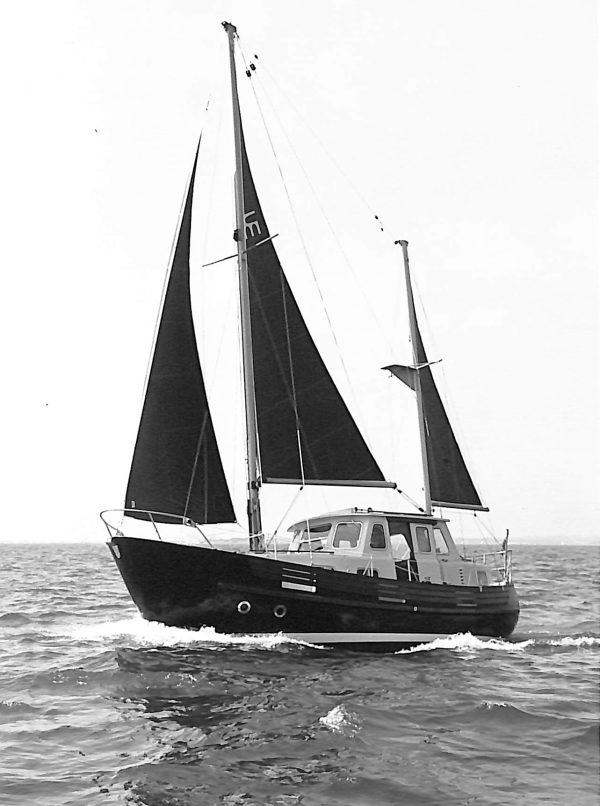
- northeaster 30 fairways marine
What is the Yachting Collection?
The DigiClerk Yachting Collection is a digitised online collection of a wide variety of leisure marine related records. The majority of the records are leisure maritime and consist of photos, reviews, magazine articles, plans, sales brochures etc. Nowhere else is such a varied but sector focussed collection available online.
Click here for a short intro video from one of the founders.
DigiClerk has categorized them making them easy to sort and filter and find.
Click here for an overview of the sort and filter functionality and a more detailed look.

Irish stamps
What is a Collection? See this short video for an overview from Mark.
A DigiClerk Collection is a group of records based around a certain thing or item. The current collections are based on people, stamps and yachting but there will be more coming. We are already being asked about Coins, Maps and Postcards. Also, DigiClerk Members can create a collection of their own that may cross all the other main collections.
Collections:
People has a person as the centre of every record in the collection. Currently the life events captured are birth, marriage, death, burial and graveside. We also have ‘archive’ as a bit of a catch all event, for the moment.
Stamp is based around postage stamps allowing stamp collectors to digitise, upload and share their collections with a global audience. Physical stamp collections rarely get seen by anyone other than the owner. Click here for a video showing you what you can explore right now.
Yachting is based on all things related to leisure maritime but starting with a focus on sailing and powerboats because that was what started the collection.
A DigiClerk Collection is a grouping of records based around a certain ‘thing’ or item. The current collections are based on people, stamps and yachting. We think there will soon be collections for maps and postcards with many others to come. A collection can also be based around a group interest or a visitor attraction.

people collection
The current collections:
People has a person as the centre of every record in the collection. Currently the life events captured are birth, marriage, death, burial and graveside. We also have ‘archive’ as a bit of a catch all event, for the moment. See People Collection.

stamp collection
Stamp is based around postage stamps allowing stamp collectors to digitise, upload and share their collections with a global audience. Physical stamp collections rarely get seen by anyone other than the owner. See Stamp Collection.
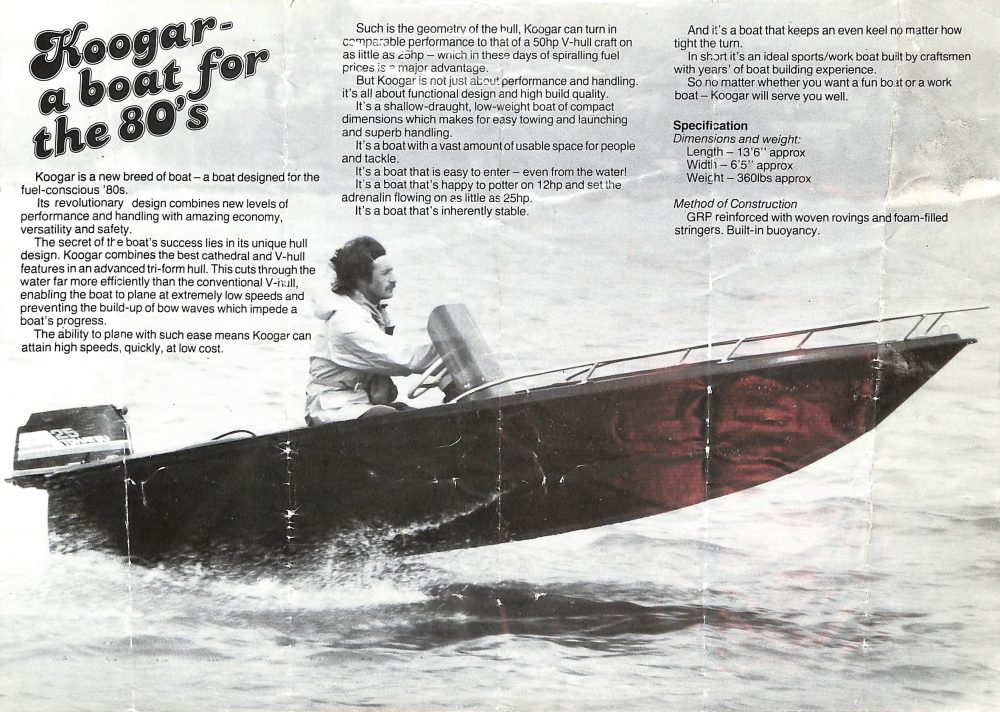
yachting collection
Yachting is based on all things related to leisure maritime but starting with a focus on sailing and powerboats because that was what started the collection. See Yachting Collection.
Upload and explore records with DigiClerk
What is DigiClerk?
DigiClerk is a new way to capture, store and explore historical records. It’s simple to use and allows you to create your own ‘collection’, either by yourself, or in collaboration with your own ‘group’ of fellow enthusiasts. The DigiClerk platform allows everyone to digitise old records (think marriage certificates, gravestones, stamps, photos, old magazines…the list goes on!) and share them with a global audience.
Our mission is to democratise the ownership of records, putting you in control to share and explore fascinating connections with likeminded people, anywhere in the world.
How does DigiClerk work?
Anyone can use DigiClerks smart phone App or home scanner to capture an image, upload it to the DigiClerk website, and then share it with the DigiClerk community. All records on DigiClerk are ‘public’ records, which means they can be uploaded, shared, and viewed by anyone subscribed to DigiClerk, so long as you’ve given permission and the ‘data explorer’ is a subscriber.
We’ve got some exciting technology powering our database, that will allow your records to be automatically matched with records if there is a common data point. This will allow for exciting discoveries and a new way to explore historical events, places and people.
What is DigiClerk?
 DigiClerk (DC) makes inaccessible records accessible and creates the links between them.
DigiClerk (DC) makes inaccessible records accessible and creates the links between them.
The DC Member digitises the record themselves and uploads them using either the DC app on a mobile phone or PC (or Mac!). This is for individuals and small organisations, as well as large entities.
There are currently the collections: People, Stamps, and Yachting
We call it ‘the democratisation of records’.
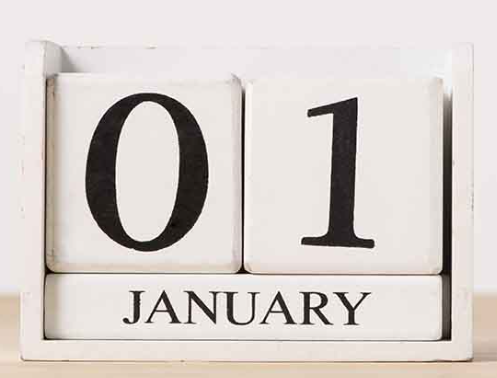 Why do all the years seem to have busy starts on DigiClerk?
Why do all the years seem to have busy starts on DigiClerk?
Within the DigiClerk People Collection all records require a:
- person
- place, and
- date.
The dates are saved in this format (ddmmyyyy). Often, especially with older records (like hearth taxes or medieval wills) on the year of the event is recorded. Where we only have the year we record the date as 0101yyyy (1st January of the year). Hence, many records appear at the 1st January and it seems that there are busy starts to the year.
Where we have the month and the year we record the date as 01mmyyyy (1st of the month of the year). Hence there seems to be a lot more activity on the first of each month. Hence, many records appear at the 1st of the month in a year and it seems that there are busy starts to the month.
Nothing to worry about!
As an aside, whilst we are on dates, if DigiClerk doesn’t have a date on a record it allocates 01011970 for the record. Random!

membership costs
Why isn’t DigiClerk free?
Because:
- DigiClerk provides a unique platform to share digitised records. Yes, some elements are similar to other platforms but a large amount of the technology behind DigiClerk has not been applied to collections. So, we are not the same.
- We will use the information that you provide about yourself and your interests to help enhance your user experience (UX) of the platform, not to give or sell to third parties nor attract advertisers.
- We dislike platform adverts and do not want to annoy Members with pop up adverts.
- However, we will keep you informed of relevant things happing within the collections. This will depend on how much information you give to us.
- DigiClerk is entirely self funded and has been boot strapped by the founders. There are no large (or small) backers so, the platform has be self sustaining.
- We will not be coming back to users, who have signed up because it is for free, and announce that we now have to charge for the service or ask for donations.
These reasons are why DigiClerk isn’t free.
The Member fee of GBP 50 per year or Member + fee of GBP 80 per year is very modest, especially when this includes relevant taxes. This excellent good deal is the Founder Member deal, a once in a life time fee of GBP 50 or GBP 80. This save you money over the long term and helps fund and form DigiClerk at the outset.
money
Will I make money from my records on DigiClerk (DC)? The answer is yes, but not yet.
Currently, we want Founder Members, who want to get in at the beginning, to support us their one off subscription and enthusiasm.
Critical density of subscribing members
Once there is a critical density of annual subscribing Members, then Members will take a share of the monthly subscriptions to their electronic DC wallets (which are not live yet). These Members must be Data Owners and have records on the platform.

my records
Criteria
So, to have the ability to make money, the Member must be either a Founder Member or Member and be Data Owners (DOs). DOs have their records uploaded and displayed on the platform. They must have subscribed once as a Founder Member or be a subscribing Member. No money in, no money out.
Calculation
The monthly subscriptions fees will be divided between DC and eligible Members. At first the calculation will be based on the volume of records each Member has on the platform. Later, as DC develops the quality assurance (QA) and dynamic data system, the calculation will be replaced by an algorithm. The algorithm will include factors such as:
- volume of records
- quality of records
- amount of ‘likes’, ‘views’ and ‘downloads
- feed back from Members
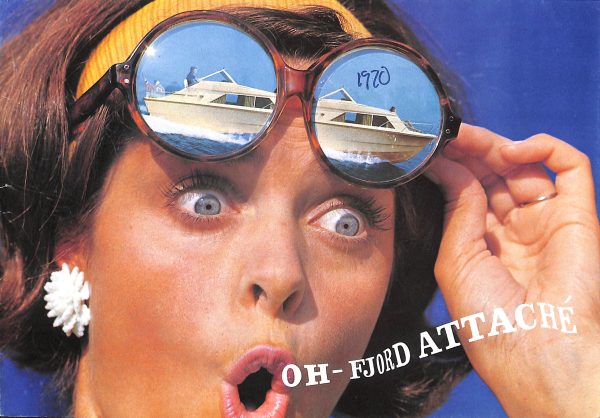
image from one of the 2,000 + records on the yachting collection
However, to be clear, this isn’t going to start until the business can self fund this.
Electronic wallets
DC will use electronic wallets and credits in order to level out exchange rate differences around the world.
Download fees shared too
Separate to all of the above, if a record is downloaded then the download fee is shared in proportion with the Data Owner (DO). The fee proportion will be put in the DO’s electronic wallet. Also, DC has been requested to provide a trading function that allows DO’s to state if their record is for sale. The trade facility is being explored at the moment.

Are these stamps for sale? The answer is, for the moment, no.
The question refers to the DigiClerk Stamp Collection and recent posts on the Facebook site DigiClerk Stamps | Facebook.
They have been scanned, digitised and uploaded to demonstrate how DigiClerk allows stamp collectors to display their collection. Displayed to a selected global audience. The community of stamp collectors.
We intend to develop a number of further features of DigiClerk and one of those will be the ability to trade stamps using an electronic wallet. Members will then be able to indicate that their stamps are for sale. Another feature will involve the use of AI to identify stamps and confirm which set they belong to.
However, we do not want to get ahead of ourselves and invent something that satisfies only us. We need the DigiClerk Stamp Collection to satisfy you and therefore, we seek Founder Members, to fund and steer the development of the DigiClerk Stamp Collection with a once in a lifetime payment.
Can I store family records on DigiClerk?
people
Yes, you can store family records on DigiClerk. That’s one of the many reasons we have created DigiClerk and the People Collection platform.

archive in your attic. family records
You can upload your family records for others to see them either in public or a private group.
Better than that you can earn credit to your electronic wallet from those family records on DigiClerk and in public view.
You can also share your records within a private group. There is an extra cost involved in keeping the records private to a group. This could wrk well for a school alumini, military We have a live example that you can follow on the news page.

prentice house
The answer to “can we share records privately” is yes, but not yet. This is because we haven’t enabled the private collection function yet. At the moment all records on DigiClerk (DC) are available to Founder Members and Members depending on which Collection(s) they access to.
Very early on we realised that there would be the need to allow Members to share records privately. This could be a school alumni group, a family group, a military reunion group or a commercial organisation using DC for its archives. DC envisages three levels of privacy and sees them as growing from the bottom up, as they become more public.
The Membership costs will be higher for Blurred and Opaque collections because the revenue share model of DC cannot work with private records.
.

data protection
What is your data policy? First take a look at this short video to hear, first hand, our intentions.
The key points are:
- We do not share the data that you give us with any third party, except
- Your payment details only go to the third party payment party, we do not hold that data
- We only hold what you tell us
- We will use that data and information from the platform cookies to enhance your user experience
Our formative data policy is here.
Can DigiClerk help a museum?
Yes. Museums want to attract visitors and increase footfall and a measure of success for the majority of museums is normally their volume of visitors. DigiClerk can help a museum broaden its audience, funnel interest in the exhibits and increase footfall.
The issue

museum record (1)
Not all museums create and manage their own online information. Even those that do have a website do not necessarily have the platform for uploading their records and displaying them on an online platform. Another issue is not being able to display all their records in the physical exhibition space. The problem might also be that they have too many records.
The photograph (museum record (1) is an example from a local museum of a physical record on display. There are two such records on display in an historical location that must have had thousands of similar records. You would only know that there was a record concerning George Brunning if you visited that museum.
Long story, short
Using the DigiClerk platform the museum can upload and explore their own records. Once uploaded, the public can see that there is a record and the location of the record. They must subscribe to DigiClerk to open and view the record. This means that the number of records and their type and people involved is available to the general public and therefore increases the audience and hopefully, footfall.

Long story
The record was photographed using the DigiClerk smart phone app and automatically uploaded onto the platform. On the platform the details of the record were extracted and the relevant information input.
The platform also allows the inputter to input an accession code telling users where the physical record is stored. A key function for any archivist.
Immediately a geolocation is recorded for the record and shown on the DigiClerk map on the platform. There are thousands of dropped pins on the DigiClerk map. When the surname ‘Brunning’ is searched, the related record(s) is shown (see museum record (2). This search functionality is open to the general public and alerts anyone looking for the surname Brunning that there is a record or event at this location. Use the live map here and test it out.

museum record (3)
On zooming in and clicking on that dropped pin (see museum record (3)) DigiClerk shows anyone viewing that there is an ‘Archive’ record, the name of the person and where it is located. Up until this point anyone on the internet can get to this stage. This information is available to the general public.
To be able to ‘Click to view’ the record you must be a subscriber to DigiClerk and the record is then available to view and explore (see museum record (4)). The record holds an image of the record but holds much more information related to that record. The user can then explore and see which other events or other people are related to this person. The exploration begins.

museum record (4)

church burial register
DigiClerk can help your church.
- Who gets to see the records held in your church? The likely answer is not many.
- How does anyone know what records are in your church and what names are amongst them? The likely answer is one person. The Rector.
- Is there an online map of the graves in the churchyard? The likely answer is no.
DigiClerk (DC) can help your church.
As a church do you know the true value of the records that you have stored in the church and those sent to county archives? In terms of diversity, who gets to see those records? Using the DC platform the church can digitise your records (leaving the physical records where they are) and make them available online to a global audience.

churchyard gravestone
Better than that, once DigiClerk has the right volume of subscribers, the church will earn income from those records.
Want to know more? Please contact mark@digiclerk.uk
We are seeking Founder Members to help accelerate the development of the platform. See this one time fee offer and be part of the record revolution.

church burial register
DigiClerk can help your church.
- Who gets to see the records held in your church? The likely answer is not many.
- How does anyone know what records are in your church and what names are amongst them? The likely answer is one person. The Rector.
- Is there an online map of the graves in the churchyard? The likely answer is no.
DigiClerk (DC) can help your church.
As a church do you know the true value of the records that you have stored in the church and those sent to county archives? In terms of diversity, who gets to see those records? Using the DC platform the church can digitise your records (leaving the physical records where they are) and make them available online to a global audience.

churchyard gravestone
Better than that, once DigiClerk has the right volume of subscribers, the church will earn income from those records.
Want to know more? Please contact mark@digiclerk.uk
We are seeking Founder Members to help accelerate the development of the platform. See this one time fee offer and be part of the record revolution.

How do I upload stamps?
Here is a summary of how to upload stamps. We are in the process of producing how to guides for Members.
Before you read this answer, you might want to watch this short video about uploading stamps.
There are two routes for the process:
- App – You can capture an image of the stamp using either the DigiClerk (DC) app on your phone, or
- CamScan – via a digital camera or scanner.
 App – The DC phone app captures the image and uploads the image directly onto DC and readies it for you to input all the relevant information about the stamp.
App – The DC phone app captures the image and uploads the image directly onto DC and readies it for you to input all the relevant information about the stamp.
CamScan – Using a camera or scanner creates one extra step in the process because the digitised image is uploaded onto your files storage system on your pc and then you pick the image from there.
In our experience the CamScan process produces the best quality image. However, this depends on the quality of the phone’s camera and the steadiness of your hand!
This slide is taken directly from the ‘how to’ guide for the Stamp Collection, currently being written. DC is producing a number of ‘how to’ guides to assist Members and here is a link to the how to upload stamps video.

events graph
How does the events graph work in the People Collection?
Perhaps best answered by this short video

How many records are on DigiClerk (DC) now? The solution is to log look at each collection on the website which show the live numbers:
The numbers on the slide to the left will be slightly less than the real number of records because this is taken from the investor deck…these are the number of records on all three collections as at 5 Jan 2023.
More than enough to demonstrate and further develop the functionality of DigiClerk. These record sets are constantly
costs
Kickstarter offer
The the ‘kickstarter’ offer is: £80 for Founder Member +; and £50 for Founder Member. These fees include VAT and are once only payments that get you lifetime membership of DigiClerk. Also, they help us fund the next round of development.
Subscription membership fees
Our subscription member ship fees are:
Member + will be £80 a year, payable annually as £80 or monthly at £8.
Member will be £50 a year, payable annually as £50 or monthly at £5.
These fees include VAT. Nothing else to pay.
The only additonal fees However, we have not made these subscription fees live on the platform yet because we are looking for Founder members at this early stage. In order to raise kickstart funding and find early adopters, DigiClerk has created ‘Founder Member +‘ and ‘Founder Member‘ offers. This is a one off payment which gives you membership of DigiClerk for life and the ability to help mould the platform. The offer is:
- £80 for Founder Member +
- £50 for Founder Member
See the join us page. and watch this short video.

war memorial
How do I capture and upload a war memorial record?
At the moment the DigiClerk (DC) People Collection has bespoke input pages for:
- births
- marriages
- deaths
- burials
- gravesides and
- archive
‘Archives’ is a bit of a catch all category and is the one most suited for war memorials because it has a geolocation and the ability to add as many people as you want. Most war memorials have a list of names and the years of the war in which they fell.

original sketch behind the idea for DigiClerk
Is a Founder Member a shareholder of DigiClerk? No.
Founder Members are not shareholders but they are those early adopters who see the benefit of a once for life ‘kickstart’ payment (£80 or £50) to help DigiClerk grow and develop more rapidly. Founder Members do not own a part of DigiClerk but will enjoy the ability to influence the development roadmap for the business and a lifetime’s membership for one payment only.
We think we have created a unique online platform for uploading records, sharing and exploring them.
A DigiClerk Collection is a group of records based around a certain thing or item. The current collections are based on people, stamps and yachting but there will be more coming. We are already being asked about Coins and Postcards. Also DigiClerk Members can create a collection of their own.
The People Collection has a person as the centre of every record in the collection. Currently the life events captured are birth, marriage, death, burial and graveside. We also have ‘archive’ as a bit of a catch all event, for the moment.
The Stamp Collection is based around postage stamps allowing stamp collectors to digitise, upload and share their collections with a global audience. Physical stamp collections rarely get seen by anyone other than the owner. Click here for a video showing you what you can explore right now.
The Yachting Collection is based on all things related to leisure maritime but starting with a focus on sailing and powerboats because that was what started the collection.
Please click on the links to see what the collections can do for you.
Join today and become part of the records revolution!

digiclerk legal and tax status
What is DigiClerk’s legal and tax status?
DigiClerk‘s legal and tax status is as a Suffolk, UK based, registered, privately owned company, subject to UK corporation tax.
We are a start-up SaaS platform at the pre revenue MVP stage.
See Companies House for more detail.
‘Member +’ and ‘Member’, what is the difference between memberships?
Member + has access to all Collections on DigiClerk whereas Member has access to one Collection only.
new functionality for the stamp collection
 New functionality for the Stamp Collection?
New functionality for the Stamp Collection?
stamps
People are already requesting new functionality for the stamp collection so we thought we should outline what further functionality is already planned.
DigiClerk (DC) currently has the ability to load one image for every one stamp on a record. So, right now, you can capture:
- an image of a jumble of stamps on the table
- a page of stamps from an album or stock book
- a stamp set
- a stamp sheet
- a stamp
However, we need to be able to upload two images because, sometimes, you need to be able to see the back of a stamp or the back of a first day cover. The ability to capture two images for one record is in the pipeline.
Our fields allow you to identify the following: data owner, data source; country of stamp; location associated in the stamp; currency of stamp; subject matter, date of stamp, there are extra people related fields if it is a first day cover. There are fields to state if the stamp is for sale or not and fields to record where the stamp is stored. What’s planned for more fields? DC will create a field to capture the state of the stamp (mint, used etc) but need Founder Members to help us define their requirements.
DC will implement AI to help Members sort their digitised stamps into digital sets and identify which other members have similar sets and collections…and so much more. We see API allowing DC to scrape information from the internet to help Members. Information related to the valuation of stamps and the locations of stamps that Members are seeking.
Come and join the records revolution!
What is the DigiClerk Stamp Collection?

stamp collection
DigiClerk Stamp Collection is the world’s first online global stamp club. The collection allows Members to share their collections, online, around the world. This frees philately from physical collections and meetings.
Problem
Who gets to see your collection? The answer is probably, only you!
Solution
Upload and explore with The DigiClerk Stamp Collection (DCSC). Give your stamps a much wider audience and share your collection of stamps online with other Members around the world.
With DCSC, you can:
- capture and digitise an image of your stamp(s), using:
- the DCSC app on your smart phone, or
- a digital camera, or
- a scanner.
- upload the image onto the platform, and
- identify and categorise the stamp image. DCSC helps identify the stamp and what set it belongs to (future development), and
- create an accession number for the physical location to help sort and retrieve your physical stamps, and
- publish your stamp collection and share it with fellow enthusiasts, and
- explore others’ collections. DCSC will will also tell you which Members share the same collections and where the missing stamps are that you seek (future development).
- use your electronic wallet to trade stamps with fellow Members (future development).
Philately/ stamp collection definition and history
The study of postage stamps, stamped envelopes, postmarks, postcards, and other materials relating to postal delivery is known as philately.
The term was created in 1864 by a Frenchman, Georges Herpin, who invented it from the Greek philos, “love,” and ateleia, “that which is tax-free”. The postage stamp permitted the letter to come free of charge to the recipient, rendering it untaxed. Who doesn’t like something tax free?!
Books in which to keep stamps were first issued by Justin Lallier in Paris in 1862 and are known as stamp albums.
Join
Join the DCSC Club journey here.

- northeaster 30 fairways marine
What is the Yachting Collection?
The DigiClerk Yachting Collection is a digitised online collection of a wide variety of leisure marine related records. The majority of the records are leisure maritime and consist of photos, reviews, magazine articles, plans, sales brochures etc. Nowhere else is such a varied but sector focussed collection available online.
Click here for a short intro video from one of the founders.
DigiClerk has categorized them making them easy to sort and filter and find.
Click here for an overview of the sort and filter functionality and a more detailed look.

Irish stamps
What is a Collection? See this short video for an overview from Mark.
A DigiClerk Collection is a group of records based around a certain thing or item. The current collections are based on people, stamps and yachting but there will be more coming. We are already being asked about Coins, Maps and Postcards. Also, DigiClerk Members can create a collection of their own that may cross all the other main collections.
Collections:
People has a person as the centre of every record in the collection. Currently the life events captured are birth, marriage, death, burial and graveside. We also have ‘archive’ as a bit of a catch all event, for the moment.
Stamp is based around postage stamps allowing stamp collectors to digitise, upload and share their collections with a global audience. Physical stamp collections rarely get seen by anyone other than the owner. Click here for a video showing you what you can explore right now.
Yachting is based on all things related to leisure maritime but starting with a focus on sailing and powerboats because that was what started the collection.
A DigiClerk Collection is a grouping of records based around a certain ‘thing’ or item. The current collections are based on people, stamps and yachting. We think there will soon be collections for maps and postcards with many others to come. A collection can also be based around a group interest or a visitor attraction.

people collection
The current collections:
People has a person as the centre of every record in the collection. Currently the life events captured are birth, marriage, death, burial and graveside. We also have ‘archive’ as a bit of a catch all event, for the moment. See People Collection.

stamp collection
Stamp is based around postage stamps allowing stamp collectors to digitise, upload and share their collections with a global audience. Physical stamp collections rarely get seen by anyone other than the owner. See Stamp Collection.

yachting collection
Yachting is based on all things related to leisure maritime but starting with a focus on sailing and powerboats because that was what started the collection. See Yachting Collection.
Upload and explore records with DigiClerk
What is DigiClerk?
DigiClerk is a new way to capture, store and explore historical records. It’s simple to use and allows you to create your own ‘collection’, either by yourself, or in collaboration with your own ‘group’ of fellow enthusiasts. The DigiClerk platform allows everyone to digitise old records (think marriage certificates, gravestones, stamps, photos, old magazines…the list goes on!) and share them with a global audience.
Our mission is to democratise the ownership of records, putting you in control to share and explore fascinating connections with likeminded people, anywhere in the world.
How does DigiClerk work?
Anyone can use DigiClerks smart phone App or home scanner to capture an image, upload it to the DigiClerk website, and then share it with the DigiClerk community. All records on DigiClerk are ‘public’ records, which means they can be uploaded, shared, and viewed by anyone subscribed to DigiClerk, so long as you’ve given permission and the ‘data explorer’ is a subscriber.
We’ve got some exciting technology powering our database, that will allow your records to be automatically matched with records if there is a common data point. This will allow for exciting discoveries and a new way to explore historical events, places and people.
What is DigiClerk?
 DigiClerk (DC) makes inaccessible records accessible and creates the links between them.
DigiClerk (DC) makes inaccessible records accessible and creates the links between them.
The DC Member digitises the record themselves and uploads them using either the DC app on a mobile phone or PC (or Mac!). This is for individuals and small organisations, as well as large entities.
There are currently the collections: People, Stamps, and Yachting
We call it ‘the democratisation of records’.
 Why do all the years seem to have busy starts on DigiClerk?
Why do all the years seem to have busy starts on DigiClerk?
Within the DigiClerk People Collection all records require a:
- person
- place, and
- date.
The dates are saved in this format (ddmmyyyy). Often, especially with older records (like hearth taxes or medieval wills) on the year of the event is recorded. Where we only have the year we record the date as 0101yyyy (1st January of the year). Hence, many records appear at the 1st January and it seems that there are busy starts to the year.
Where we have the month and the year we record the date as 01mmyyyy (1st of the month of the year). Hence there seems to be a lot more activity on the first of each month. Hence, many records appear at the 1st of the month in a year and it seems that there are busy starts to the month.
Nothing to worry about!
As an aside, whilst we are on dates, if DigiClerk doesn’t have a date on a record it allocates 01011970 for the record. Random!

membership costs
Why isn’t DigiClerk free?
Because:
- DigiClerk provides a unique platform to share digitised records. Yes, some elements are similar to other platforms but a large amount of the technology behind DigiClerk has not been applied to collections. So, we are not the same.
- We will use the information that you provide about yourself and your interests to help enhance your user experience (UX) of the platform, not to give or sell to third parties nor attract advertisers.
- We dislike platform adverts and do not want to annoy Members with pop up adverts.
- However, we will keep you informed of relevant things happing within the collections. This will depend on how much information you give to us.
- DigiClerk is entirely self funded and has been boot strapped by the founders. There are no large (or small) backers so, the platform has be self sustaining.
- We will not be coming back to users, who have signed up because it is for free, and announce that we now have to charge for the service or ask for donations.
These reasons are why DigiClerk isn’t free.
The Member fee of GBP 50 per year or Member + fee of GBP 80 per year is very modest, especially when this includes relevant taxes. This excellent good deal is the Founder Member deal, a once in a life time fee of GBP 50 or GBP 80. This save you money over the long term and helps fund and form DigiClerk at the outset.
money
Will I make money from my records on DigiClerk (DC)? The answer is yes, but not yet.
Currently, we want Founder Members, who want to get in at the beginning, to support us their one off subscription and enthusiasm.
Critical density of subscribing members
Once there is a critical density of annual subscribing Members, then Members will take a share of the monthly subscriptions to their electronic DC wallets (which are not live yet). These Members must be Data Owners and have records on the platform.

my records
Criteria
So, to have the ability to make money, the Member must be either a Founder Member or Member and be Data Owners (DOs). DOs have their records uploaded and displayed on the platform. They must have subscribed once as a Founder Member or be a subscribing Member. No money in, no money out.
Calculation
The monthly subscriptions fees will be divided between DC and eligible Members. At first the calculation will be based on the volume of records each Member has on the platform. Later, as DC develops the quality assurance (QA) and dynamic data system, the calculation will be replaced by an algorithm. The algorithm will include factors such as:
- volume of records
- quality of records
- amount of ‘likes’, ‘views’ and ‘downloads
- feed back from Members

image from one of the 2,000 + records on the yachting collection
However, to be clear, this isn’t going to start until the business can self fund this.
Electronic wallets
DC will use electronic wallets and credits in order to level out exchange rate differences around the world.
Download fees shared too
Separate to all of the above, if a record is downloaded then the download fee is shared in proportion with the Data Owner (DO). The fee proportion will be put in the DO’s electronic wallet. Also, DC has been requested to provide a trading function that allows DO’s to state if their record is for sale. The trade facility is being explored at the moment.

You must be logged in to post a comment.